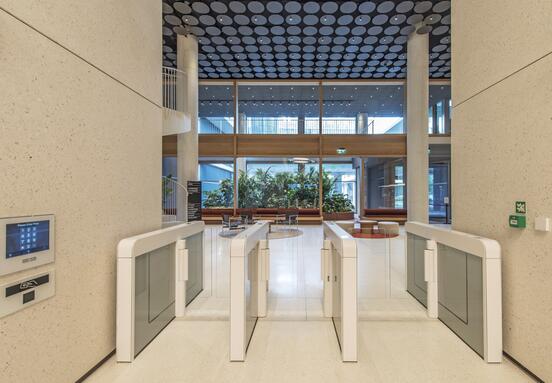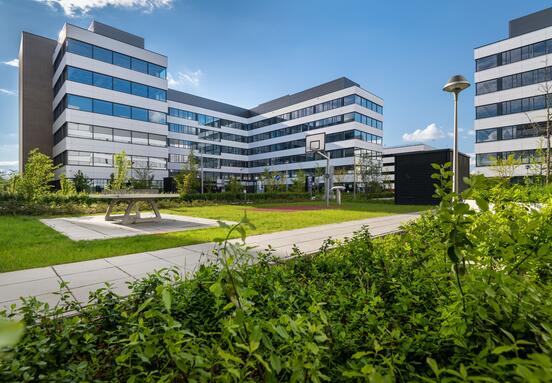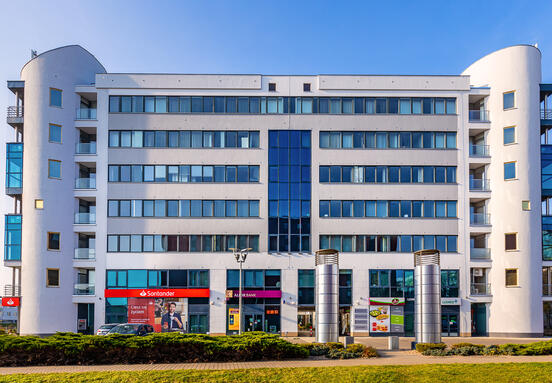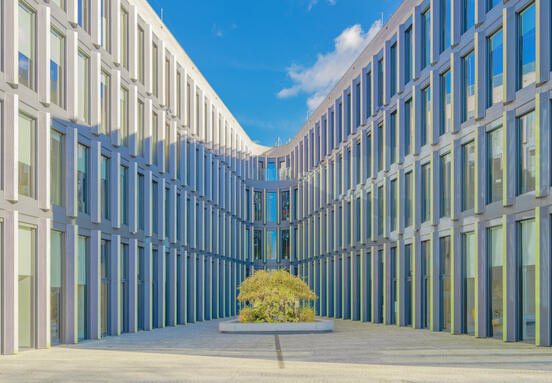While the amenities arms race is far from news, an understanding of the types of amenities we are likely to see in the coming years is more important than ever, as they will be a winning factor for getting tenants back and attracting new ones in months to come.
This article will describe four categories of amenities that are likely to expand in ever more creative directions in coming years.
Aesthetics
Most buildings – even well-designed ones with plenty of architectural detail on the outside – get boring fast. Coming into the same office day after day, seeing the same walls and color palette for eight-plus hours each time, is far from inspiring. Even art displays can become bland. The typical tendency for corporate art to lean towards neutrality does little to capture the imagination.
With that, the first new type of amenity to expect is simply innovative aesthetics. Of course, we’re all familiar with the “cool” office – a space that might have an open floor plan, give free lunches, or have a ping pong table. The offices of the coming years will elevate those tropes with aesthetics of the future.
One trend we are already seeing is the tendency for the best buildings to offer on-site event programming for tenants to take part in.
One area to watch is video walls – very large screens that can cover an entire wall surface and display a constantly rotating selection of visual media. Video walls could display static art displays – representations of paintings or sculptures – showcase nature footage, or show abstract patterns like the computer screensavers of yesteryear.
Programming
Whether classes, workout sessions, networking events, or parties, programmed events can go far farther than any physical amenity to build a sense of community at a property and help workers come to view their office as a positive space for more than just producing income. With modern tenant experience management platforms like Spaceflow, landlords now have a comprehensive way to deliver customized programming to their tenants with little setup needed.


Rec rooms and rest areas in offices can be beautiful but expensive
Nontraditional office activities
The offices of the future will be equipped with a variety of spaces meant to give workers the option to do activities that traditionally weren’t considered typical for the workplace.
For instance, quiet rooms or nap pods can let workers relax in spaces a little more comfortable than the cubicle.
Other options include recreational activities like escape rooms or sports – things that might not conceptually fit into the typical image of an office building. While this sort of amenity is certainly an obvious choice for further innovation, the costs associated with building out custom spaces can be prohibitively high.
Connectivity and spatial networking
The most attractive buildings will take advantage of something outside of the landlord’s direct control – the characteristics, draws, and ease of access of the surrounding neighbourhood. Indeed, in a world where every city is replete with well-amenitized buildings, it will undoubtedly be the bigger picture of a building’s location, positioning and spatial network that makes it stand out to tenant firms and their workers.
To that end, landlords are already working on adding public transit-centric features to their buildings - bicycle parking, electronic transit schedules, and ridesharing pullouts. The buildings of the future will likely take that emphasis a step farther with master-planned layouts, neighbourhood discount “perk” clubs, and local alliances that build into surrounding spaces to become a network of usable areas and a major draw for workers.
These are just four of the avenues we will likely see explored in office buildings over the coming years. It is important to remember that not every amenity fits in every situation - company culture, worker demographics, location, and industry norms will all have a heavy hand in determining which amenities “stick” and which don’t.
For those landlords and firms at the vanguard of the amenity experience, they may wind up as the heralds of new office experiences, and reap the commensurate rewards. Alternately, they could sink untold millions into spaces and amenities that fizzle – uses that never quite capture the attention of their workers, and fail to justify the expenses of their construction.
That’s why it’s so important to run a poll or any other form of feedback prior to implementing any solution in place. That’s how the tenant experience platform and other digital solutions come in handy.
With that, experiential amenities can be considered an efficient choice as opposed to full-fledged built-in physical amenities like dedicated recreation rooms. Platforms like Spaceflow, on-site entertainment options or classes, and perk clubs all cost far less than building new rooms or utilizing custom furniture. In a world of shifting workforce demands and rapidly evolving work styles, these low-impact solutions could be the most efficient choices for office landlords around the world.








